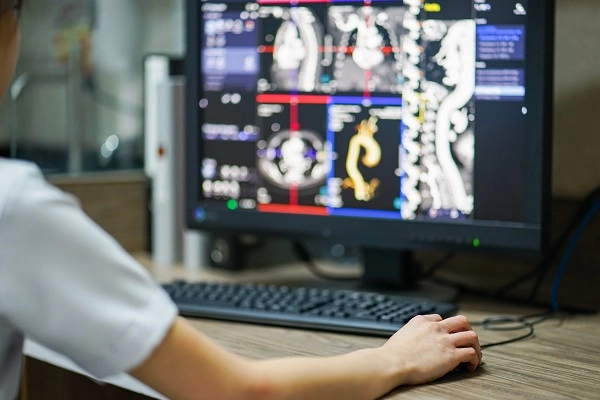The future is here: Heart conditions are more treatable than ever before

By Jessica Brisson, PA-C, Salem Health Cardiology
Not that long ago, having heart disease was like carrying around a ticking time bomb. And while it is still the leading cause of death in many countries, including the United States, today’s treatments give heart patients new hope for a long life.
Cutting-edge medical technology and research have led to a variety of new treatments and procedures that can help prevent and treat heart disease.
Here are some of the most important advancements heart patients can take advantage of today.
Improving diagnostic technologies
Advances in diagnostic technologies have helped improve cardiovascular medical services by allowing doctors to detect heart disease earlier and more accurately. One example of a new diagnostic technology is computed tomography (CT) angiography, which uses X-rays and computer software to create detailed images of the heart and blood vessels. CT angiography can help doctors identify blockages or other abnormalities in the arteries that supply blood to the heart.
Another new diagnostic technology is magnetic resonance imaging (MRI), which uses a strong magnetic field and radio waves to create images of the heart and blood vessels. MRI can help doctors identify structural problems with the heart or detect areas of reduced blood flow.
In addition to CT angiography and MRI, there are also several new blood tests available that can help detect heart disease. One example is the high-sensitivity troponin test, which measures levels of a protein that is released into the blood when the heart is damaged. High levels of troponin can indicate a heart attack or other serious heart problem.
Medications that lower cholesterol
High cholesterol is a major risk factor for heart disease, as it can lead to the buildup of plaque in the arteries that supply blood to the heart. Fortunately, there are now several medications available that can help lower cholesterol and reduce the risk of heart disease.
One type of medication is called a statin, which works by blocking an enzyme in the liver that produces cholesterol. Statins can help lower LDL (or "bad") cholesterol levels, which can help reduce the risk of heart attack and stroke.
Another type of medication is called a PCSK9 inhibitor, which works by blocking a protein that regulates the amount of LDL cholesterol in the blood. PCSK9 inhibitors are given as injections and can be used in combination with statins to further lower cholesterol levels.
Minimally invasive surgeries
One of the most exciting developments in cardiovascular medical services is the rise of minimally invasive surgeries. These procedures allow doctors to treat heart disease without making large incisions in the chest or abdomen, which can lead to shorter recovery times and less pain for patients.
One type of minimally invasive surgery is coronary angiogram, which is used to treat blockages in the arteries that supply blood to the heart. During this procedure, a small balloon is inserted into the artery and inflated to widen the blocked area. In some cases, a stent (a small metal mesh tube) is also placed in the artery to keep it open.
Another minimally invasive procedure is transcatheter aortic valve replacement (TAVR), which is used to treat aortic stenosis, a condition in which the heart's aortic valve becomes narrow and restricts blood flow. During TAVR, a small tube is inserted into an artery in the groin or chest and guided up to the heart. Then, a new valve is implanted over the existing valve, which can help improve blood flow and reduce symptoms.
On the horizon
Other promising areas of research in cardiovascular medical services are gene therapy and regenerative medicine.
Gene therapy involves using genetic material to treat or prevent diseases, including heart disease.
One example of gene therapy is the use of small viruses that have been modified to carry therapeutic genes, which can be inserted into the heart's cells to help treat or prevent heart disease.
Regenerative medicine involves using stem cells or other types of cells to repair or replace damaged tissue in the heart. For example, in cardiac cell therapy, healthy stem cells are injected directly into the heart to help repair damaged tissue. Another approach is tissue engineering, which involves creating new heart tissue in a lab using a combination of cells and scaffolding materials.
In conclusion, advances in cardiovascular medical services have led to a variety of new treatments and procedures that can help prevent and treat heart disease. While there is still much to learn about these new treatments, they offer hope for the millions of people around the world who are affected by heart disease.